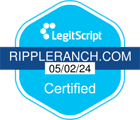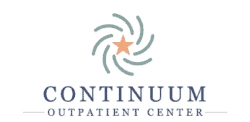Different Types Of Substance Use Disorders
What is a substance use disorder (SUD) and how can it lead to long-term mental and physical health consequences? Find out here.
Understanding Substance Use Disorders (SUD)
Substance use disorders refer to a broad range of issues brought on by drug use. They are recurrent patterns of symptoms arising from the continued use of a drug, notwithstanding the occurrence of complications
Misuse of substances affects the person, the family, and the community, making it a severe public health issue. Unfortunately, many substance use disorders often worsen with time, but the prospects of long-term recovery increase with early intervention.1

Table of Contents
Learn More About Ripple Ranch Recovery Center
Our team is standing by to discuss your situation and options. Your call is fully confidential, and no obligation is required
Overview of Substance Use Disorders
What Is the Difference Between Substance Use Disorder and Addiction?
Although both drug abuse and addiction are typically damaging, there are significant variations between “substance use disorder” and “addiction.”
As a mental condition, substance use disorder affects a person’s brain and behavior, resulting in an inability to manage their use of legal or illicit drugs, alcohol, and prescribed medications. The American Society of Addiction Medicine describes addiction as a curable but chronic illness involving neural circuitry, genetics, environmental factors, and life circumstances.2
Different Types of Substance Use Addictions
Abuse of substances is not a moral or willpower problem. Substance use disorders are difficult and powerful, and sometimes it’s hard to quit on your own without additional help. Because addiction changes the brain, quitting is difficult without professional or other types of help.
Certain substance related disorders include:
Opioid Use Disorder
Opioids include commonly prescribed synthetic substances such as heroin, tramadol, and fentanyl. Cocaine is another opiate that is often acquired illegally.
Other opioid substance types include:
- Hydrocodone (Vicodin®)
-
Morphine
-
Oxycodone (OxyContin®)
-
Codeine
Marijuana Use Disorder
Marijuana, also commonly called weed, is the dried flowers and leaves of the cannabis plant that contain the brain chemical THC (delta-9-tetrahydrocannabinol) and other chemicals.
Stimulant Use Disorder
A stimulant raises blood pressure, respiratory rate, attention, and vigor. Methamphetamine, Ritalin®, Modafinil®, Adderall®, and cocaine are stimulants.
Sedative Use Disorder
Sedatives are drugs that work by inhibiting neural activity. They include:
- Xanax®
-
Valium®
-
Lunesta®
-
Ambien®
Some of the side effects of these medications include slurred speech, drowsiness, disorientation, mobility and memory impairments, decreased blood pressure, and slow breathing. Long-term use leads to tolerance and dependence.
Hallucinogen Use Disorder
Hallucinogens change perception, ideas, and emotions. They cause hallucinations, which are false feelings, noises, and sights. Hallucinogens may be discovered in plants, mushrooms, or labs. Hallucinogens have been used religiously for ages.
Alcohol Use Disorder
A person with an alcohol use disorder (AUD) struggles to limit how much they drink and often becomes dependent upon the substance.
Addiction is a chronic, relapsing brain disorder characterized by compulsive alcohol use, lack of control over alcohol intake, and poor emotional state when not drinking. Long-term drinking may potentially harm a person’s health. Heavy drinking may harm the heart, liver, pancreas, impair the immune system, and raise cancer risk as well.
Substance Use Disorders: a Deeper Look
What Causes Substance Use Disorder?
Drug and alcohol use may be caused by cultural pressures, traumatic experiences, or genetic factors. You must confront these problems head-on, no matter what the root reason may be.
Genetics
Those who have a parent or other family member who once had a substance use disorder are more likely to develop one themselves.
Experts are still hunting for specific genes that cause addiction. However, it is more common that environmental variables, such as exposure and the acceptance of drug use, are to blame for family tendencies for addiction.
Personality Traits
While no person’s personality has been identified as being particularly prone to drug or alcohol misuse, psychologists and other addiction specialists have identified some characteristics that seem to be associated with a higher risk of substance abuse:
- Irresponsibility
-
Nonconformity
-
Anxiety and a low tolerance for stress
-
Constantly searching for excitement
-
Blame shifting
Stress
Stress causes various maladaptive behaviors, including addiction. Chronic stress is commonly connected to alcohol usage for some people.4
The Substance’s Action
Some drugs, like stimulants, cocaine, and opiate medicines, may cause addiction quicker than others. Also, injecting or smoking narcotics increases addiction risk.
Family History
One of the most significant factors influencing addiction, outside of biology and genetics, is family and early experiences. Family dynamics, parenting methods, and control all have an impact on people’s ability to cope with pressure and their mental health.
Authoritarian or negligent parenting, familial violence, and divorce are associated with subsequent drug abuse.
Peer Pressure
Adolescents are particularly vulnerable to peer pressure, but adults may still be swayed by it, too. Friends influence what people do, and drug- and alcohol-using environments foster such conduct.
Mental Health Conditions
29% of people with mental illness abuse medications. Drug dependency may result from various mental diseases, including PTSD, anxiety, and depression.5
Many people who suffer from mental diseases, such as anxiety disorders, also use medication to treat their sickness. These substances could also lead to addiction.
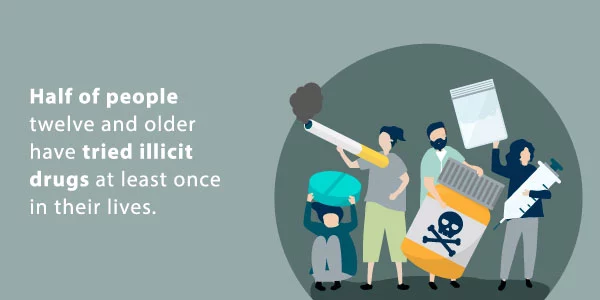
What Are the Signs and Symptoms of Substance Use Disorder and Addiction?
Drug dependence in adolescents and adults manifests itself in many ways, including various symptoms and behavioral changes. Symptoms of substance use disorders that appear commonly are:
- Continuing usage despite potential negative effects on one’s health and relationships
-
A desire for the substance or action
-
Consistent and/or excessive consumption
-
Using in settings that are not secure
-
Giving up things you once loved because of usage
-
Utilizing and recuperating for a prolonged period
-
Ignoring obligations at work, home, or school
-
Enhancing one’s tolerance
-
Having withdrawal symptoms while attempting to stop
What’s the Next Step After Identifying Symptoms of a Substance Use Disorder?
There are many other signs and symptoms of substance use disorders, but if you notice any of these in either yourself or a loved one, it might be time to seek help. Reaching out to a treatment center or other healthcare facility can be the difference between getting the help you might need and continuing use.
Commonly Abused Drugs
Although marijuana and alcohol are the most commonly abused substances, they are not the only two. In addition, methamphetamine, pain relievers, hallucinogens, cocaine, depressants, inhalants, and heroin are other often misused substances that can lead to addiction.
Alcohol
Everyone’s behavior response to alcohol varies. However, your risk of being hurt or having an accident increases if you drink excessively and too often. Heavy drinking may result in liver and other health issues or a more severe alcohol disorder.
Prescription and Over the Counter (OTC) Drugs
Sixteen million Americans, or roughly 6% of the population, have misused any prescription psychotherapeutic medicine in the previous year. The most commonly misused prescriptions in the United States include hydrocodone, oxycodone, Vicodin, Percocet, and Oxycontin.
Heroin
Heroin is derived from the opium poppy, a shrub that mostly grows in Mexico, South America, and Asia. It’s highly addictive, which is why the United States has outlawed it since 1924.
Cocaine
The leaves of the South American native coca plant are used to make cocaine, a highly addictive stimulant narcotic. Although it is permissible for medical professionals to use cocaine for legitimate medical procedures, such as local anesthesia during certain operations, it is prohibited for recreational usage.
Marijuana
Marijuana is a combination of the dried flowers of the cannabis sativa plant. It is also known as weed, pot, grass, and many other slang words. Some individuals consume their marijuana through joints, pipes, bongs, or blunts.
Cigarettes and Other Tobacco Products
More than 12.5% of adults in the United States who are at least 18 years old report being current smokers. This means there are now 30.8 million adult smokers in the United States.
More than 16 million people in the United States suffer from a disease directly linked to smoking. To make matters worse, this problem affects everyone, even those who use electronic cigarettes. Cigarettes and e-cigarettes both contain nicotine, a highly addictive chemical, which is the primary element in both.
Substance-Induced Mental Disorders
Substance-induced mental illnesses are mental changes caused by drug use or withdrawal that mirror distinct mental conditions such as depression. These conditions include:
Substance-Induced Psychotic Disorder
People who misuse psychotomimetic substances, such as marijuana, cocaine, stimulants and related agonists, hallucinogens, and psychedelic drugs like ketamine and phencyclidine (PCP) , often experience psychosis when intoxicated.6
Substance-Induced Bipolar and Related Disorders
These are mood swings that alternate between manic and depressive states that are brought on by drug use. They are normally absent when narcotics aren’t used.
Substance-Induced Depressive Disorders
These are the feelings of sadness, despair, suicidal thoughts, poor energy, difficulties focusing, and social withdrawal caused by drug use and are not usually present when drugs are not used.
Substance-Induced Anxiety Disorders
Generalized anxiety disorder, along with fear, anger, and sleeplessness, are all examples of side effects that may occur when a person is taking medication but not otherwise.
Substance-Induced Sleep Disorders
Insomnia, or the difficulty of falling or remaining asleep at night, excessive daytime sleepiness, or a mix of the two, are examples of sleep disruptions that can be brought on by drug use but are not normally present when narcotics aren’t used.
Substance-Induced Sexual Dysfunction
Drug misuse may cause serious problems with sexual desire and libido, but these concerns are significantly less serious than the common side effects of drug addiction.
Substance-Induced Delirium
Drug or alcohol abuse may cause delirium, a condition characterized by confusion and mental disorientation.
Substance-Induced Neurocognitive Disorders
This consists of cognitive impairments such as memory problems, aphasia (the loss of the capacity to comprehend speech), and apraxia.
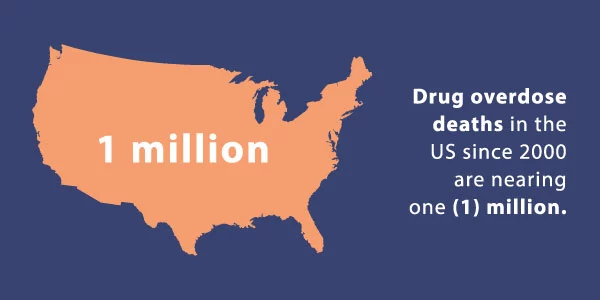
How Are Substance Use Disorders Diagnosed?
When someone seeks treatment from a medical professional to quit using drugs, they may be diagnosed with a substance use disorder. Four groups of criteria may be used to diagnose a drug use disorder:7
- The usage of the drug is uncontrollable by the user
-
Drug usage impairs the person’s capacity to fulfill societal commitments
-
The user uses the drug under potentially harmful circumstances
-
The individual demonstrates outward symptoms of dependency or usage
Statistics on Substance Use Disorders
Here are some crucial facts and figures about substance use disorders in the United States:8
- As of 2020, there were thirty-seven million active illicit drug users in the United States aged 12 and older.
-
About 21% of users aged twelve and over have used illicit substances or mistreated prescribed medications.
-
24% of Americans suffer from an alcohol use problem.
-
An estimated fifty-seven million individuals use tobacco or nicotine products like vapes.
-
Opioid disorders, including heroin and painkillers prescribed by a physician, affect 24.7% of drug users.
Substance Use Disorder Risk Factors
Although there is no proven cause of drug use disorders, there are a number of risks. A person may be more susceptible to developing a drug use problem if one or more of the following conditions exist:
Genetics
Genetic factors account for about 50% of the overall risk of alcoholism. The presence of a family history of the condition is one of the largest risk factors for drug addiction. Teenagers with alcoholic parents, or those with a family history, exhibit AUD more than four times as often as those without.9
Substance Use at an Early Age
Most drug users begin their habit when they are still teenagers and still living with their parents. These risk elements consist of:
- Drug usage in the family
-
Absence of nurturing
-
Favorable familial circumstance
-
A lack of rules that are distinct and consistently applied
Exposure to Advertising
Substantial evidence suggests that drug use is often portrayed in a good light in media for teenagers and young people, and that this exposure is linked to later substance use.
A Current Mental Health Diagnosis
Some individuals self-medicate with drugs and alcohol to relieve their own mental tension. This more likely tends to result in some kind of drug use problem.
A History of Abuse or Neglect
People who experienced abuse or neglect as children mostly use alcohol and drugs as a kind of self-medication. Maltreatment in early childhood is strongly correlated with addictions later in life.
Substance Use Disorder Detox Opportunities
There are many types of treatment for substance use disorder. However, the majority of people usually begin with detoxification.
Drug Detox
Detoxification is the process of assisting the body in eliminating the effects of drug use. Detox is used to control withdrawal symptoms safely.
A detox program, especially for severe substance use disorder, can be held at either inpatient (residential) or outpatient rehabilitation facilities. Both types are equally concerned with rehabilitation, yet each has certain features and advantages.
Different Options for Undergoing Drug Detox
Serious addictions are treated in intense, residential treatment facilities known as inpatient rehabs. Patients get constant clinical and psychological care while housed at a treatment facility.
On the other hand, outpatient treatment clinics are part-time programs that allow drug users to continue working or attending school while simultaneously receiving treatment. The subject areas of these sessions include drug addiction education, individualized and group psychotherapy, and teaching drug users how to survive without narcotics.
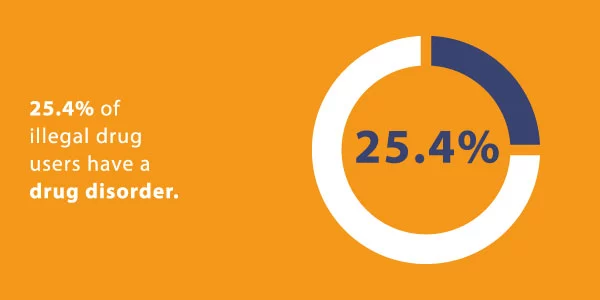
Substance Use Disorder Psychological Therapy Treatment Options
Psychological treatments include examining issues that are preventing someone with an SUD from getting better when they’re grappling with addiction. Psychological therapies are collaborative settings where you may examine your problems in a secure and private environment. They consist of:
Motivational Interviewing (MI)
MI is a cooperative, result-driven therapeutic approach for enhancing commitment and motivation to a specific objective. The client and interviewer resolve ambivalence and make the desired objective reality by using the patient’s motivations for change.
Motivational Enhancement Therapy (MET)
MET therapy may help a person grappling with substance use disorders recognize the need for a change and give them the drive to get started.
Prize-Based Contingency Therapy
Under this program, people who use drugs and are receiving community-based therapy have the chance to earn rewards if they continue to abstain from drugs.
Seeking Safety
An evidence-based therapy called seeking safety aims to improve safety in those who have dealt with trauma or drug addiction. It is a therapy program that gives women recovering from trauma, drug addiction, or PTSD a secure atmosphere to get treatment.
Guided Self-Change (GSC)
This is a quick, skills-oriented motivational intervention for dealing with alcohol and other substance abuse issues. GSC employs both fundamental behavioral change principles, along with strategies for engaging employees’ motivation.
It unavoidably includes personalized treatment objectives, behavior change techniques, and drug use objectives based on clients’ individual experiences.

Substance Use Disorder Behavioral Therapies Treatment Options
Behavior therapy, often known as behavioral psychotherapy, is general professional psychotherapy that employs cognitive psychology or behaviorist methods. They consist of:
Cognitive-Behavioral Therapy (CBT)
A psychotherapy approach known as cognitive-behavioral therapy teaches patients how to recognize and alter unhelpful or distressing thinking patterns that hurt their behavior and emotions.
Dialectical-Behavior Therapy (DBT)
To control potentially dangerous or destructive behaviors and achieve constructive adjustments in their lives, DBT assists patients in discovering strategies to accept themselves, feel comfortable, and deal with their emotions.
Assertive Community Treatment (ACT)
ACT is for people with major mental illnesses that make it difficult to contribute to the economy, attend doctor visits in medical centers, and regulate their psychological symptoms.
Therapeutic Communities (TC)
The Therapeutic Community (TC) is a setting where individuals may get care while assisting others. The interactions between its members are intended to be rehabilitative within the framework of the norms that demand that each member perform the double role of therapist and client.
Medication for Substance Use Disorder
Get Help with Substance Use Disorders at Ripple Ranch
We can assist you in stabilizing and beginning the road to recovery if you have a problem brought on by drug use disorder. Our expert Ripple Ranch team is exceptional in treating conditions that co-occur with drug usage.
Leverage our skilled facilities to safely and comfortably detox with the help of consulting doctors. Both group and individual therapy sessions at our facility can come in handy to assist you in developing effective plans for the future.
To understand more about how we can help you achieve long-term healing and recovery, reach out to us today.
Resources
- 1 https://addiction.surgeongeneral.gov/executive-summary
- 2https://www.asam.org/quality-care/definition-of-addiction
- 3https://nida.nih.gov/publications/research-reports/tobacco-nicotine-e-cigarettes/nicotine-addictive
- 4https://www.psychologytoday.com/us/blog/all-about-addiction/201904/top-10-ways-eliminate-stress-without-alcohol
- 5https://www.helpguide.org/articles/addictions/substance-abuse-and-mental-health.htm
- 6https://nida.nih.gov/publications/drugfacts/hallucinogens
- 7https://www.ncbi.nlm.nih.gov/pmc/articles/PMC3767415/
- 8https://drugabusestatistics.org/
- 9https://www.thedawnrehab.com/adult-children-of-alcoholics/



